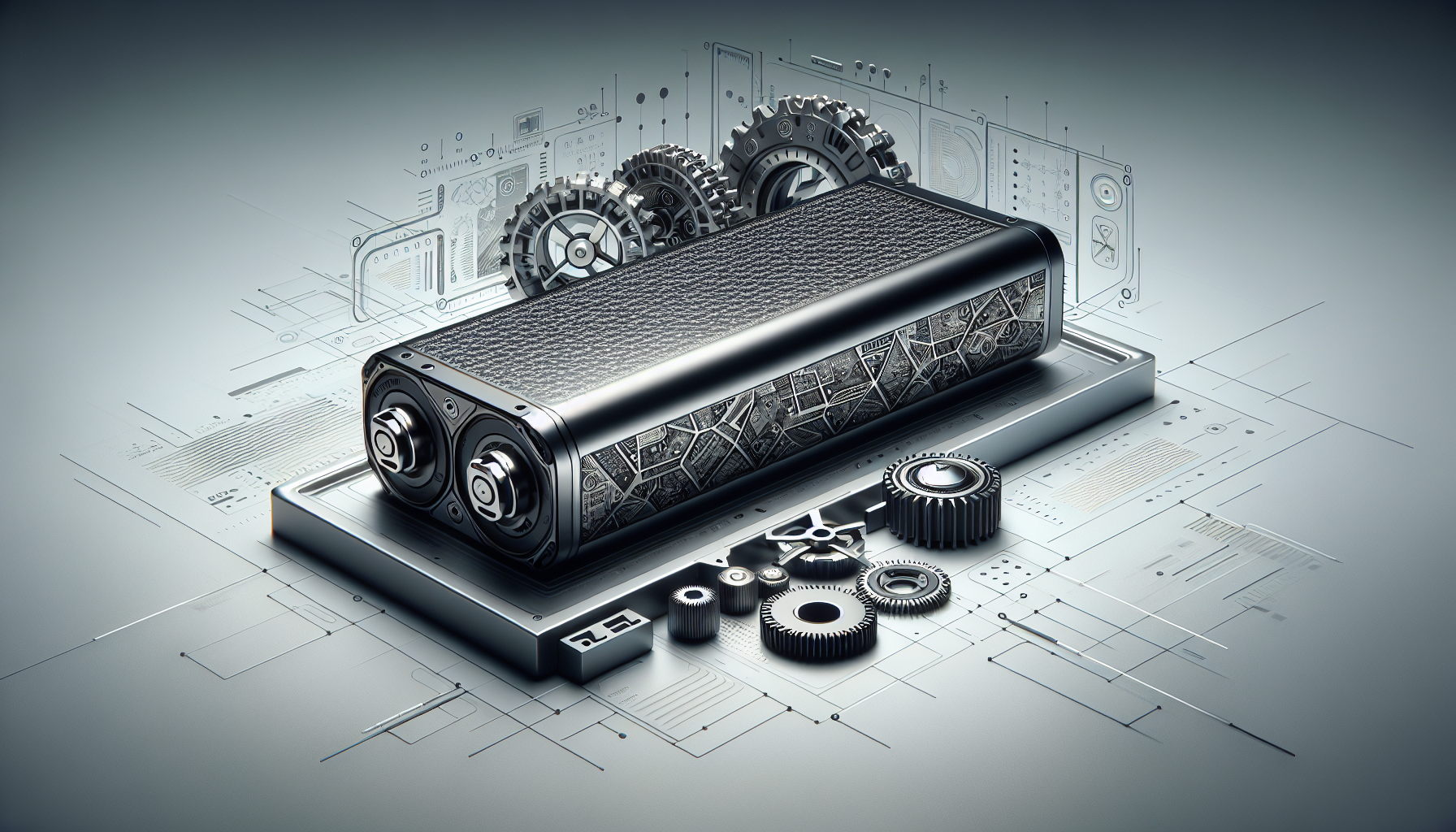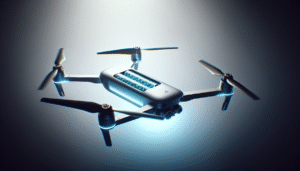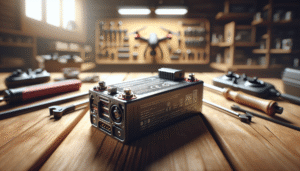Have you ever found yourself frustrated by the short life of your drone’s battery, just as you’re about to capture that perfect aerial shot? It’s not just you, a lot of drone enthusiasts find themselves thinking about battery cycles more often than they anticipate. Let’s talk about drone battery cycle life, what factors impact it, and most importantly, how you can improve it.

Understanding Drone Battery Cycle Life
Before diving into the complexities, it’s crucial to understand what a battery cycle is. A battery cycle refers to the process of using the battery from 100% to 0% and then charging it back to full. Depending on usage and manufacturing quality, a typical drone battery can go through a specified number of cycles before its efficiency starts fading. Here’s the part where it gets interesting—it’s the ability to identify these subtle changes that can make or break your drone flying experience.
Why Drone Battery Cycle Life Matters
Simply put, the cycle life of a battery determines how long it will last. If you can extend this cycle, you prolong not only the battery life but also the time you can spend enjoying your drone flights. It’s an investment—the longer you can use the battery efficiently, the more value you derive from it. Imagine missing out on those beautiful sunset sky views just because you failed to maintain your battery cycle life; that’s a scenario you absolutely want to avoid.
Factors Impacting Drone Battery Cycle Life
Let’s get into what affects the drone battery cycle life. There are many elements at play, and knowing these can help you manage and potentially improve the life of your battery.
1. Temperature
The temperature at which the battery operates is crucial. Batteries are like good wine—they have a preferred temperature range. Extremes, whether too hot or too cold, can significantly damage the battery cycle life. Most lithium-ion batteries, which are commonly used in drones, perform best between 20°C to 25°C (68°F to 77°F).
Table: Temperature Impact on Battery Life
| Temperature Range | Effect on Battery Life |
|---|---|
| Below 0°C (32°F) | Reduces capacity and possibility of damage |
| 20°C to 25°C | Optimal Performance |
| Above 35°C (95°F) | Causes internal damage and cycle reduction |
2. Charging Habits
How you charge your battery is as important as how you use it. Overcharging or using quick-charging methods can impose stress on the battery. Always use the charger provided by the manufacturer and avoid letting it trickle charge overnight. Fast is not always better, especially when charging a drone battery.
3. Discharge Rate
The rate at which you drain the battery affects its lifespan. Discharging the battery completely to 0% often can be detrimental. Ideally, you should aim to stop your flight when the battery is around 20%. Think of it as a warning light for both car and mind trying to squeeze out the last mile fearing a breakdown.
4. Storage Practices
If you’re putting down your drone for a while (perhaps waiting for that desirable weather to return), it’s vital to store the batteries correctly. Don’t store fully charged or fully discharged batteries. Aim for a charge level of 50–60% during storage. Humidity and ambient temperature should also be controlled to avoid corrosion or other damage.
5. Quality of Battery
Not all batteries are created equal. Original equipment manufacturer (OEM) batteries generally provide better performance and longer cycle life compared to cheaper alternatives. Investing in a reputable brand makes a world of difference, ensuring that your drone continues to hover smoothly above the treetops rather than unexpectedly plummeting from the skies.
6. Flight Characteristics
The way you fly affects the cycle life too. Aggressive flying with sudden accelerations and sharp maneuvers can push your battery to its limits. Consistently gentle and planned flying sessions are kinder on your battery life and can lead to more cycles over time.

Tips to Improve Drone Battery Cycle Life
Now that we’ve covered the influential factors, let’s steer into strategies you can employ to extend your drone battery’s cycle life.
1. Optimal Charging Techniques
- Use Original Chargers: Avoid third-party chargers that may not be compatible with your battery specifications.
- Avoid Overcharging: Remove the battery once it’s fully charged instead of letting it stay in the charger.
- Balance Charging: If your drone supports it, use balance charging to maintain all cells at an optimal level.
2. Temperature Management
- Pre-flight Warm-up: In colder conditions, warm the battery in your hand or pockets before use.
- Keep Cool in Heat: Avoid direct sunlight and let batteries cool before initiating a charge.
3. Flight and Discharge Strategy
- Monitor Battery Levels: Track battery levels and aim for a minimum 20% capacity before landing.
- Avoid Aggressive Maneuvering: Keep flights consistent and gentle to preserve the battery life.
4. Storage Best Practices
- 50-60% Charge for Storage: Before storing, ensure the battery is neither fully charged nor entirely drained.
- Cool & Dry: Store in a cool, dry environment to maintain battery health.
5. Regular Maintenance
- Check for Damage: Regularly inspect batteries for swelling, leaks, or any physical damage.
- Calibration: Occasionally, fully drain and then fully charge the battery to calibrate the onboard electronics.
Personal Reflections on Drones and Battery Life
I remember the excitement I felt the first time I flew a drone. The liberating sensation, peering over landscapes like a modern-day bird. But, shortly after those thrilling flights, there was dismay when the battery alerts cut the journey short—a reminder of just how limited we are by power.
Like teaching oneself the subtle art of cooking—with enough practice, understanding, and careful management, you gradually become less reliant on luck and instead achieve consistent satisfaction from your creation. In the realm of drones, ensuring a long battery cycle life is akin to mastering your own moves—the equivalent of a smooth symphony performance, making every minute in the skies count.
Accepted Trade-offs
While this all sounds like quite the chore, it’s notable that these practices offer a worthwhile trade-off. They bring reliability, making certain that those dream flights don’t turn into nightmares due to unexpected failures.
Cost vs. Convenience
It’s often tempting to reach for the cheaper batteries on the market. This option provides short-term savings, but in the longer run, when you factor in the frequency of changes and the stress of inconsistent performance, it gets outweighed by the cost of reliability and peace of mind.
Time vs. Efficiency
Time spent in maintenance and mindful usage indeed demands patience, much like nurturing a plant. It reaps benefits in the hours of flight without abrupt endings, like an untimely edit, leaving you with a seamless experience and footage that stories are made of.
Conclusion
Drone battery cycle life impacts how we experience flying and capturing moments. By understanding the influencing factors and implementing strategies to enhance battery life, we can ensure sustained joy in this hobby. It’s about more than just the numbers; it’s about extending those moments of wonder. So, the next time you venture out with your drone, think of your trusty battery not as just a power cell but as a critical part of your journey. Let it elevate your experience by giving it the care it rightly deserves. After all, in this sky-bound dance, batteries are indeed the unsung heroes.


